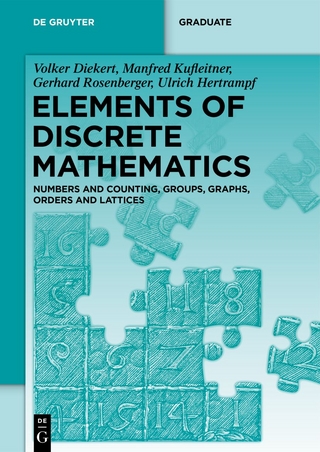Temporal Patterns of Communication in Social Networks
Seiten
2013
|
2013
Springer International Publishing (Verlag)
978-3-319-00109-8 (ISBN)
Springer International Publishing (Verlag)
978-3-319-00109-8 (ISBN)
This book reveals that human temporal patterns of interaction significantly affect the traditional view of social networks, shifting from a very steady to a highly complex entity. It reveals new features of how complex social networks develop over time.
The main interest of this research has been in understanding and characterizing large networks of human interactions as continuously changing objects. In fact, although many real social networks are dynamic networks whose elements and properties continuously change over time, traditional approaches to social network analysis are essentially static, thus neglecting all temporal aspects. Specifically, we have investigated the role that temporal patterns of human interaction play in three main fields of social network analysis and data mining: characterization of time (or attention) allocation in social networks, prediction of link decay/persistence, and information spreading. In order to address this we analyzed large anonymized data sets of phone call communication traces over long periods of time. Access to these observations was granted by Telefonica Research, Spain. The findings that emerge from our research indicate that the observed heterogeneities and correlations of human temporal patterns of interaction significantly affect the traditional view of social networks, shifting from a very steady to a highly complex entity. Since structure and dynamics are tightly coupled, they cannot be disentangled in the analysis and modeling of human behavior, though traditional models seek to do so. Our results impact not only the way in which social network are traditionally characterized, but more importantly also the understanding and modeling phenomena such as group formation, spread of epidemics, and the dissemination of ideas, opinions and information.
The main interest of this research has been in understanding and characterizing large networks of human interactions as continuously changing objects. In fact, although many real social networks are dynamic networks whose elements and properties continuously change over time, traditional approaches to social network analysis are essentially static, thus neglecting all temporal aspects. Specifically, we have investigated the role that temporal patterns of human interaction play in three main fields of social network analysis and data mining: characterization of time (or attention) allocation in social networks, prediction of link decay/persistence, and information spreading. In order to address this we analyzed large anonymized data sets of phone call communication traces over long periods of time. Access to these observations was granted by Telefonica Research, Spain. The findings that emerge from our research indicate that the observed heterogeneities and correlations of human temporal patterns of interaction significantly affect the traditional view of social networks, shifting from a very steady to a highly complex entity. Since structure and dynamics are tightly coupled, they cannot be disentangled in the analysis and modeling of human behavior, though traditional models seek to do so. Our results impact not only the way in which social network are traditionally characterized, but more importantly also the understanding and modeling phenomena such as group formation, spread of epidemics, and the dissemination of ideas, opinions and information.
Introduction and Motivation.- Social and Communication Networks.- Social Strategies in Communication Networks.- Predicting Tie Creation and Decay.- Information Spreading on Communication Networks.- Conclusion, contributions and vision for the future.- Data and Materials.
| Erscheint lt. Verlag | 3.6.2013 |
|---|---|
| Reihe/Serie | Springer Theses |
| Zusatzinfo | XIV, 153 p. |
| Verlagsort | Cham |
| Sprache | englisch |
| Maße | 155 x 235 mm |
| Gewicht | 421 g |
| Themenwelt | Mathematik / Informatik ► Mathematik ► Graphentheorie |
| Naturwissenschaften ► Physik / Astronomie ► Theoretische Physik | |
| Schlagworte | Analysis of Social Networks • Handling and Mining Massive Datasets • Human Communication Patterns • Mathematical Modeling of Human Communication • Temporal Behavior of Communication Ties |
| ISBN-10 | 3-319-00109-4 / 3319001094 |
| ISBN-13 | 978-3-319-00109-8 / 9783319001098 |
| Zustand | Neuware |
| Haben Sie eine Frage zum Produkt? |
Mehr entdecken
aus dem Bereich
aus dem Bereich
Numbers and Counting, Groups, Graphs, Orders and Lattices
Buch | Softcover (2023)
De Gruyter (Verlag)
64,95 €


